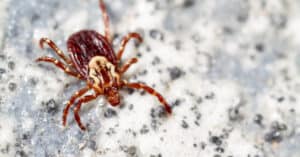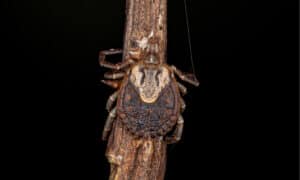There are at least five species of ticks in Washington, but only a few of those are capable of transmitting disease to humans. Some of the ticks in Washington rarely come into contact with people, and some of them actually live indoors. Ticks are parasitic arachnids closely related to scorpions, spiders, and mites. They live off of one thing and one thing only: blood. Ticks can go more than two years without a blood meal and may expand up to ten times their original size when fully fed. They prey on just about everything that moves, including humans and dogs.
Here, we’ll learn about the various ticks you might run into in the evergreen state. Then, we’ll take a look at when they come out and whether or not they carry Lyme disease. Finally, we’ll learn how to avoid getting bit by a tick on your outdoor adventures in Washington this summer.
American Dog Tick
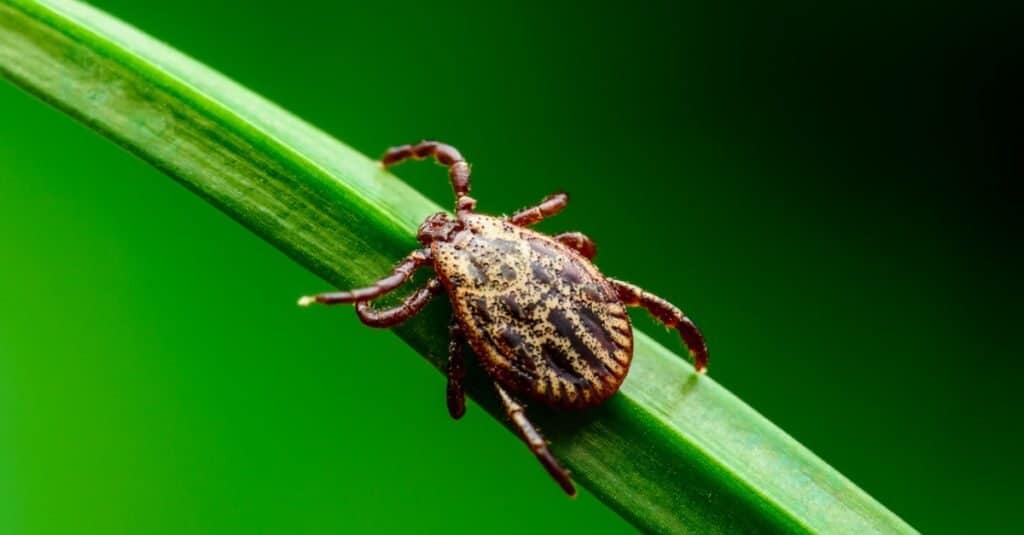
Dermacentor variabilis, the American dog tick, is one of the most common ticks in North America.
©iStock.com/nechaev-kon
American dog ticks live in eastern Washington. They’re very similar in appearance to the Rocky Mountain wood tick. Both males and females have brown legs and brown bodies. But, females have tan scuta (shields over the upper body) and all brown abdomens. Males have mottled tan and brown abdomens, with no discernable scuta markings.
These ticks are common in fields, shrublands, and along the edges of hiking trails. They’re most active in the spring and summer months and frequently bite people. Luckily, American dog ticks don’t spread Lyme disease. However, they do carry Rocky Mountain spotted fever. Mice, squirrels, groundhogs, coyotes, foxes, skunks, dear, birds, and deer are among their favorite prey species.
Winter Tick
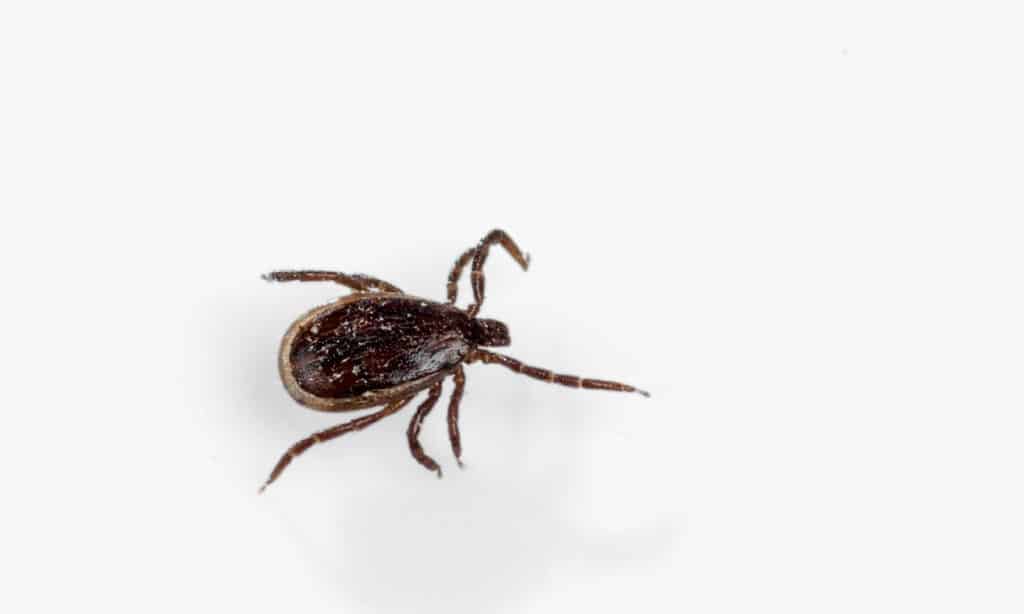
Dermacentor albipictus, the winter tick, lives primarily in remote areas with plenty of big game.
©iStock.com/VladK213
Winter ticks are small, brown, and sometimes deadly to large game animals. They’re only ever seen by hunters in the fall and winter months, and they don’t bite people. Instead, these ticks attach themselves to one large animal—like a bear, moose, or elk—for the entirety of their lives.
The other ticks in Washington take multiple hosts throughout their lifecycle, but the winter tick sticks with the same host until it dies. This can lead to severe infestations of over 100,000 ticks on a single animal. There are even cases of moose dying from winter tick infestations.
Western Blacklegged Tick
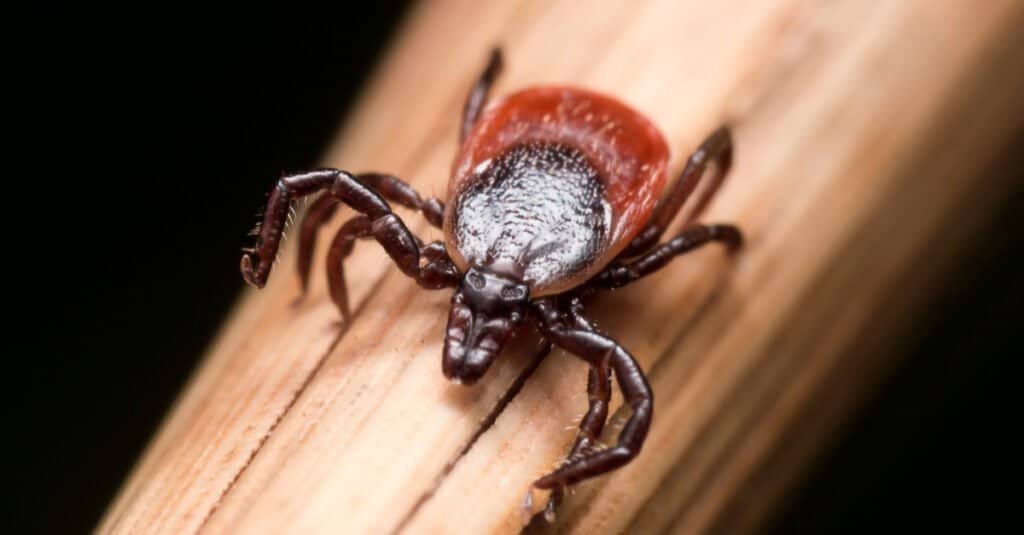
The deer tick can spread Lyme disease.
©Steven Ellingson/Shutterstock.com
Western black-legged ticks are commonly known as deer ticks. They live only in western Washington, where they’re most common in forested areas. As their name suggests, deer ticks feed primarily on white-tailed deer; they’re found wherever there is deer to feed on. Blacklegged ticks are the only ticks in Washington that carry Lyme disease; they will bite humans if they get the chance.
Blacklegged ticks are so named because they are the only types of ticks in Washington with black legs. Only adult female black-legged ticks can spread Lyme disease. They’re easily recognizable by their dark legs, black scuta (the shields over their shoulders), large mouthparts, and red-brown bodies.
Rocky Mountain Wood Tick
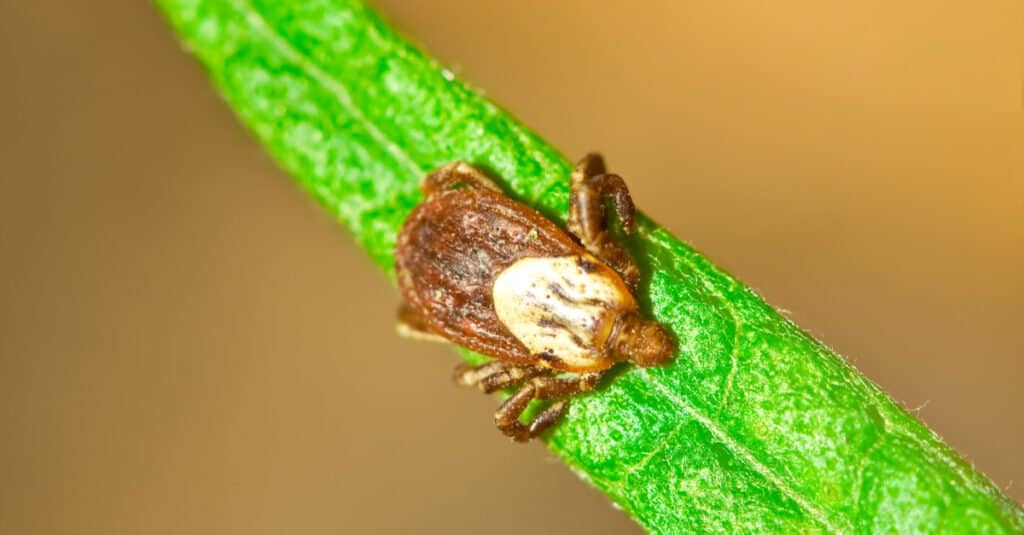
Dermacentor andersoni, the Rocky Mountain wood tick, is only found in eastern Washington.
©South12th Photography/Shutterstock.com
Rocky Mountain wood ticks look so much like American dog ticks that it’s often impossible to tell the difference. They’re found only in eastern Washington and feed on rabbits, coyotes, deer, elk, and other mammals. Rocky Mountain wood ticks live primarily in forested areas and the boundary zones between forests and grasslands, wetlands, or shrublands. They do not carry Lyme disease but are the main vector for the Colorado tick fever virus. They may also carry Rocky Mountain spotted fever.
Brown Dog Tick
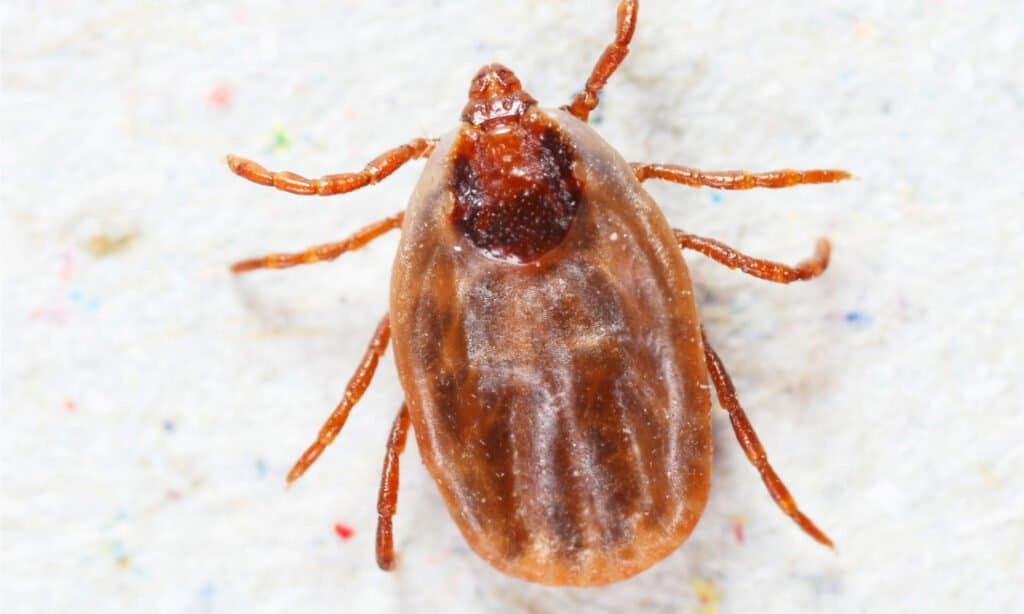
Rhipicephalus sanguineus, the brown dog tick, lives indoors.
©7th Son Studio/Shutterstock.com
Brown dog ticks don’t live outside, they live indoors, in close proximity to dogs. They have narrow, brown bodies with small mouthparts and no distinguishing markings. They’re most commonly found attached to the dog’s ears, belly, or the areas where the legs join the body. Brown dog ticks do not carry Lyme disease, but they can transmit dog-specific diseases to your canine companion. They rarely bite humans.
When is Tick Season in Washington?
Ticks in Washington are most common in the spring and summer months. Ticks aren’t as big of a problem in Washington as they are in other states, particularly those in the northeastern United States. But, when going outdoors in Washington, you should still take proper tick prevention steps.
Do Ticks in Washington have Lyme Disease?
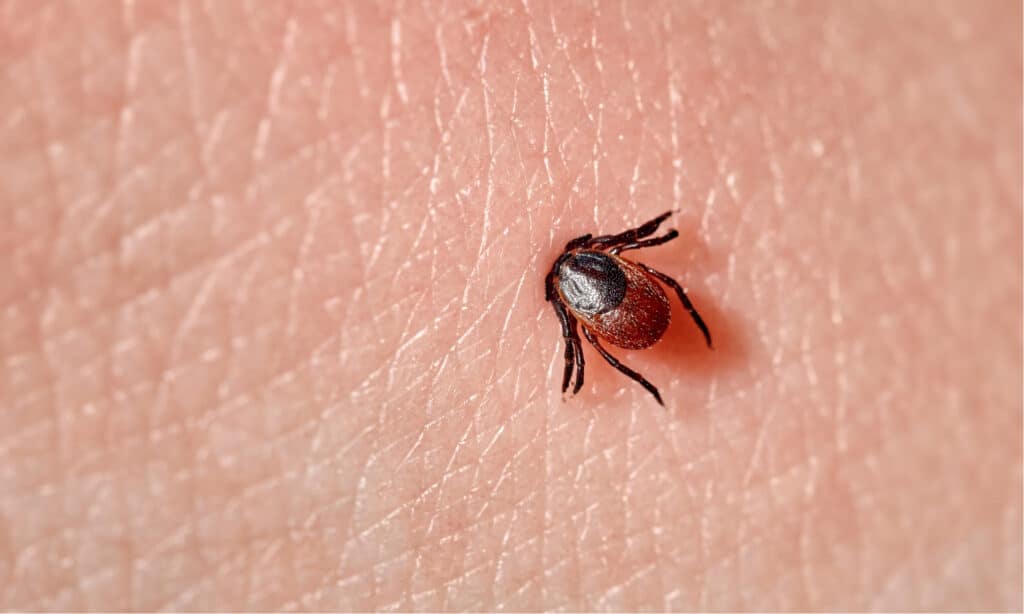
Lyme disease is a bacterial infection that can cause a variety of symptoms in nearly every system of the body.
©Evgeniyqw/Shutterstock.com
Fortunately for residents of Washington, cases of Lyme disease are rare. However, there are still a number of new cases every year, particularly in western Washington. Lyme disease is passed to humans by the western blacklegged tick; blacklegged ticks are the only ticks in Washington that carry Lyme disease. Additionally, blacklegged ticks generally need to be embedded for at least 36-48 hours to spread the bacteria responsible for Lyme disease.
How to Avoid Ticks in Washington
The first step in avoiding a tick bite is to cover your skin. Ticks can’t bite through clothing, and they can’t jump, or even run, either. So, for optimal tick protection, wear light-colored, long-sleeved shirts and long pants. You can also spray your clothing with insect repellant—just be careful to keep it off your skin. Once outdoors, remember to stay on the trail, and avoid areas of thick underbrush or tall grass, as these are like tick super highways.
Finally, be sure to check your entire body, especially your hairline, underarms, and ankles, for ticks after your outdoor fun. If you’re camping or hiking with furry companions, be sure to check them for ticks as well. If you do find an embedded tick, remove it as soon as possible.
Up Next
The photo featured at the top of this post is © iStock.com/jonnysek
Thank you for reading! Have some feedback for us? Contact the AZ Animals editorial team.




